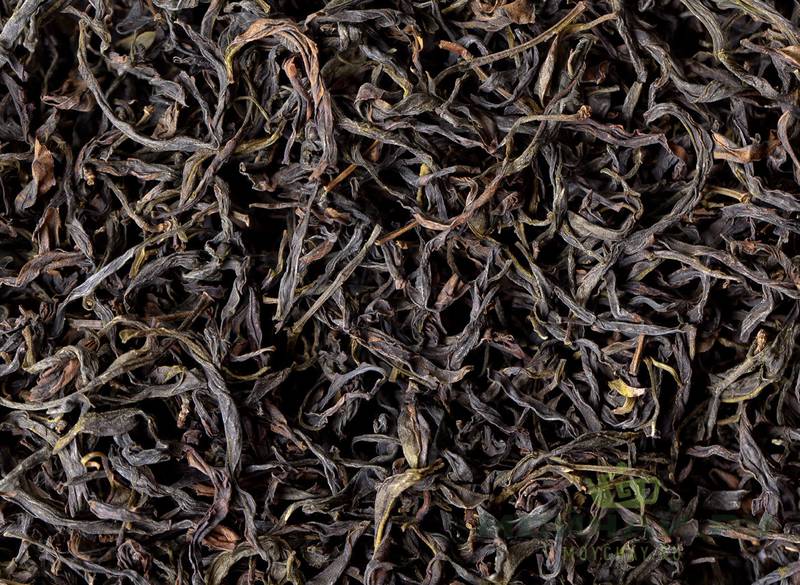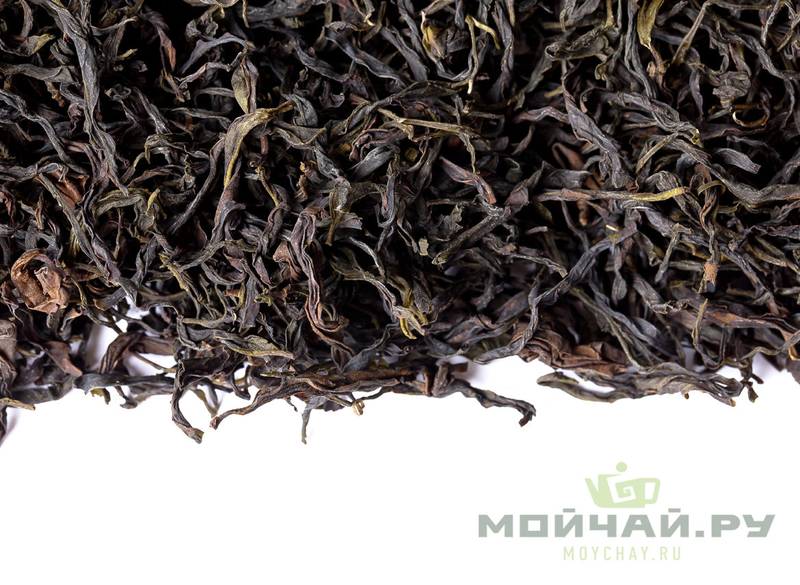This is an unfamiliar style of oolong, which makes for an interesting theme. It’s from Chaozhou, better
known for Dan Cong oolong, but it’s not identified as being that, or even related to it. As a twisted-style
oolong it appears similar but appearance alone doesn’t account for much related to tea. The listing
description fills in some details:
Oolong "To Fu" was made in May 2018 in Qiwei tea farm (Chaozhou county)…

In appearance: medium-sized, thin burgundy-brown and olive-green flagella of twisted tea leaves. The
fragrance is intensive, floral-herbaceous. The liquor is transparent, with yellowish hue.
Bouquet of ready-made teas, spicy and berry notes. The fragrance is high, floral-herbaceous. The taste
is full-bodied and sappy, with light woody tartness, berry and sourness…
Some of that matches Dan Cong and some doesn’t. Those can be floral or fruity, and the appearance
isn’t too far off, but they’re typically not tart or herbaceous (which probably matches what some people
refer to as “vegetal”). Berry isn’t a common flavor for Dan Cong; roasted or fresh peach comes up in Mi
Lan Xiang versions (one type), and from there many are floral instead, or Xing Ren includes an almond
aspect. Tasting review will sort out character and aspect details.
The first infusion comes across a bit creamy and buttery, both as a feel and a taste aspect. This is an
unusual style of tea. Jin Xuan Taiwanese plant hybrid oolongs, made in different countries, are known
for that one aspect, but this is different. With those a medium amount of sweetness and some floral
tone would support that, and this flavor range beyond that is rich and complex but at the same time
subtle. Maybe a mild floral tone is part of it but an aspect range towards sweet corn is also evident.
Some Tie Guan Yin typically express that, probably more in Chinese versions I’ve had than from
elsewhere, with the best versions of those more intensely floral instead. This works for the balance it
strikes, the way those aspect ranges come together. It will be interesting to see how it evolves from the
first round though, which aspects pick up.
On the next round mineral picks up; that’s the main difference. It still has a good bit of creaminess in
feel that is paired with an actual taste of butter or cream, and a floral flavor undertone, along with some
sweet-corn flavor, joined now by both mineral and wood-tone. The wood is close to fresh-cut pine in
flavor; it smells / tastes like a new two by four, like building lumber. That mix may not be a match for
many people’s optimum tea preference but it does work; the balance is pleasant and interesting. A tea
being well-made, clean in effect, and balanced, helps different combinations of flavors and character
aspects work well together.
Per a different interpretation some of the way that sweet-corn, mild floral, and pine-wood integrate
together could come across as berry-like. It could sound odd, that the flavor ranges aren’t similar, but
black-berry contains a mineral and vegetal undertone that goes along with a more conventional warm,
rich main fruit flavor, potentially matching up with the mineral, floral (kind of), and fresh-wood tone. Or
elderberry does too, even lighter on that sweet fruit range and more towards an inky mineral aspect, as
part of a set of complex flavors.
Warmth picks up on the next infusion (third). The sweet corn flavor has faded, and type of wood in the
wood aspect shifted, with a warm floral range picking up. It can be hard to identify unfamiliar floral
aspect range; maybe sunflower? A light floral tone picks up a little too, closer to orchid, but the overall
main flavor range is warmer and complex now. It might work to interpret that light floral tone as a
touch of citrus, something along the lines of mandarin orange zest (outer peel). It’s better this round,
per my preference, but it wasn’t bad before, just different.

There is less transition on the fourth round, but a touch of spice does seem to join in. To be clear the
flavor character is still a bit vegetal overall, with limited input from a fresh-hardwood lumber range,
floral tone (now drawn even with other flavor aspects, or maybe slightly more pronounced than the
others, emerging as the dominant flavor), and now-diminished creaminess. A supporting aspect could
be interpreted as berry, probably closest to elderberry, with the mineral layer matching that part of that
berry tone, and the fruitier aspect closer to other range, not far off a complex floral tone.
The feel isn’t thin, just not thick, and the aftertaste range is moderate. A trace of astringency is present,
comparable to the range found in Dan Cong, seemingly tied to the vegetal aspect range. But the tea is
mostly soft and rich, not unlike how Tie Guan Yin might come across, just quite different in overall
aspect set. It’s novel, not like other oolongs I’ve tried. Dialing up the floral range and sweetness it
would be closer to a Dan Cong, but as it stands it’s sort of in between those and a Tie Kuan Yin for
overall character.
It's similar on the fifth infusion. It will probably brew a couple of more consistently prior to requiring
longer infusion times to draw out the same degree of flavor, which usually changes things a little.
The tea is pleasant. It’s unusual for being unique in style but positive for what it is, an atypical type, or
at least one that’s not as familiar as many others. A somewhat full feel (moderate as better oolongs go;
full compared to average quality versions), pronounced aftertaste, a notable mineral layer, balanced
sweetness, and over-all balance all identify this as reasonably good quality tea. It would work well as a
substitute for light Tie Guan Yin, more interesting for being slightly different, and it’s above average in
quality as many versions of those go (depending on sourcing, and varying expectations).
It’s not quite as close related to being an alternative for or variation of Dan Cong, not the same in
character range, and not quite as sophisticated and intense as above average versions of those go. But
it’s not completely unrelated to those oolongs either, in regards to some shared aspects, and on-par
with medium quality versions for positive character. That’s higher praise than it might sound; being as
good as decent Dan Cong is no small accomplishment. Preference for teas shifts what is “best” by quite
a bit, and supply and demand issues move around standard market price points, but to many tea
enthusiasts who prefer oolongs Dan Cong stands out a personal favorite, worthy of the relatively high
cost of such teas.
It was nice trying a tea type that isn’t standard, not one of the better-known types. Related to that and
aspect range, along with overall quality and balance, this is a nice tea.
